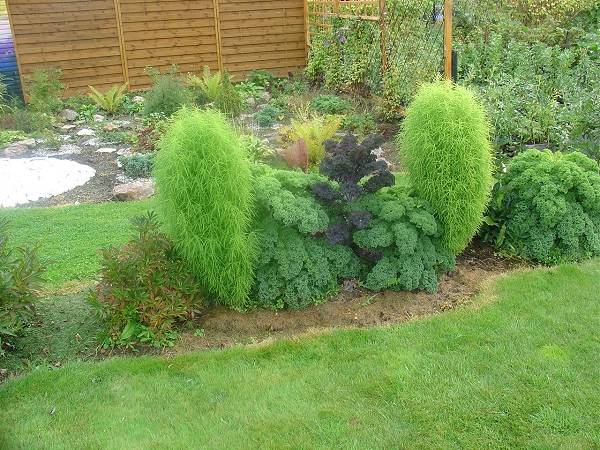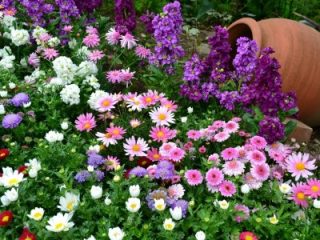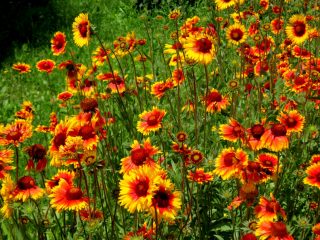Content
Kochia is slowly but firmly gaining popularity among gardeners. This low and unpretentious plant looks great in combination with other flowers in any garden plot. In most cases, subshrubs are used as a component in the preparation of various landscape design compositions. It is ideal for decorating borders. But there is very little information about growing Kochia from seeds, when to plant seedlings, how to care for them and what conditions must be observed.
Brief characteristics of the plant
China, which belongs to the Chenopodiaceae family, is considered to be the birthplace of Kochia. It is there, in the Celestial Empire, that it has been grown for quite a long time as a decorative element for landscaping. And recently, breeders have developed new varieties of Kochia, differing in the shade of foliage, shape and height of plants.
Kochia decorative has several names. It is called an annual cypress for its external resemblance to the coniferous tree of the same name. It is called broom grass because Kochia branches used to serve as raw materials for making brooms.It has two more names - Summer Cyprus or Bassia.
Kochia is a lush subshrub. On average, the height of the plant reaches from 80 cm to 1 m, depending on the variety and compliance with the growing conditions. The rich green color of the bushes may vary slightly with the shade of the lush, green mass.
Kochia's leaves are long and narrow, looking like long needles. Thanks to them, the bushes take on the shape of a cypress. By autumn, some varieties turn bright burgundy, raspberry, pink, soft lemon, dark green or even purple.
Bassia blooms inconspicuously. Small flowers are located at the base of the petioles. But gardeners are not growing Kochia from seeds for seedlings because of the flowers. The seeds ripen quickly, and the plant often reproduces uncontrollably by self-seeding.
In total, there are more than 80 species of Kochia in nature, and it grows almost all over the world. The main reasons for this popularity are:
- wide range of application as a decorative element;
- ease of cultivation;
- unpretentiousness in subsequent care.
Bassia will not require any special skills or effort from you. It is only important to understand what rules of agricultural technology need to be followed in order for the personal plot to become a model of beauty and harmony.
Agrotechnics of cultivation
In countries with warm and mild climates, Kochia is grown as a perennial plant.But tender subshrubs simply will not survive severe winter frosts. Therefore, in Russia Bassia is grown exclusively as an annual.
Kochia reproduces by seeds, which can be sown in late autumn or spring directly into open ground. But broom grass has one peculiarity - young seedlings do not tolerate even slight drops in temperature.
Therefore, to protect themselves, many gardeners grow annual plants using seedlings. You will learn from the article when to plant Kochia seeds and how to care for the plantings.
Optimal planting dates
Flower growers often ask a number of questions: what conditions must be observed when growing Kochia from seeds, when to plant seedlings and how to care for them. In general, these activities do not require specific knowledge or skills, so even a beginner can cope with them.
Residents of the southern regions can plant Kochia seeds directly in open ground in mid-to-late May. The main thing is that at the time of sowing, the threat of return frosts has passed, and the night temperature is firmly established at around +10˚С +12˚С.
But even in this case, you will have to pay a lot of attention to the crops:
- at the slightest drop in planting temperature, it is necessary to cover with lutrasil;
- strictly monitor soil moisture and the condition of seedlings;
- young seedlings are a favorite delicacy of insect pests;
- if the plantings are too dense, the young plants will need to be thinned out.
When planting Kochia for seedlings, you need to focus on the timing of transplanting plants into open ground. In the central regions, seeds should be sown in late March - early April. But residents of the northern regions can start sowing no earlier than mid-April.
The main thing, when determining the timing of when to plant Kochia seedlings, is to take into account that seedlings are transplanted to a permanent place 2-2.5 months after sowing.
Preparing containers and soil
To grow strong and healthy annual cypress seedlings, it is important to properly prepare the soil and select suitable containers.
You can plant Kochia seeds for seedlings either in separate or in bulk containers. This can be disposable tableware, plastic molds, containers and boxes for growing seedlings. There are no special requirements for containers, other than the presence of drainage holes.
It is very convenient to use peat cups or tablets when growing Kochia from seeds at home. In this case, it will be easier for you to transplant plants into open ground.
When preparing suitable soil, it is worth paying attention to the fact that Bassia is very fond of loose, fertile soil with neutral acidity levels. Garden soil can be diluted with sand, peat and humus in a ratio of 1:0.5:1:1. If the acidity of the soil is high, add a little ash to the soil mixture.
The finished soil must be disinfected with a pink solution of potassium permanganate and left for 2-3 days. If you wish, you can bake the earth in the oven. Before planting Kochia seeds, make sure the soil is sufficiently moist but not too wet.
Bassia seeds remain viable for 2-3 years, no more. But it is still better that the seed material is fresh enough. Otherwise, you may be left without seedlings at all, and all your efforts will be in vain.
Proper sowing of seeds
Before and when planting Kochia, the seeds can, if desired, be soaked for several hours in growth stimulants. However, even without treatment, they sprout quite quickly, 7-10 days after planting.
The algorithm for sowing Kochia seedlings is somewhat different from traditional activities:
- As usual, place a small layer of drainage on the bottom of the container;
- fill the container with pre-prepared soil;
- lightly compact the soil with a small wooden block;
- spread the seeds over the surface, lightly pressing them into the soil. If you sow seeds in boxes or containers, evenly distribute the seeds at an equal distance from each other in small grooves;
- Seeds should not be buried. Leave them on the surface;
- It is also not recommended to water the plantings heavily. Spray them a little from a spray bottle, cover the containers with lutrasil and place in a dark, cool place.
The optimal air temperature for growing Kochia seedlings is +18˚С +23˚С. You need to water the soil as needed. Before the first shoots appear, irrigate the plantings with a spray bottle. After friendly, green shoots appear, the seedlings can be watered with a stream. But it is important that water does not get on the plants.
Further care of Kochia seedlings involves timely watering and regular inspection.
The author of the video will tell you how and when to plant Kochia seeds for seedlings:
Picking seedlings
When growing Kochia from seeds at home, it is important to plant the seedlings correctly and in a timely manner.
Considering that Kochia seeds have to be planted superficially, the root system of the seedlings is very weak. Therefore, picking must be done very carefully, trying not to damage weak roots.
Picking is done in disposable cups, small pots, or larger containers. Drainage holes are required.
Picking begins when the sprouts reach a height of 5-7 cm. The soil for seedlings and the soil for picking should be identical in composition.
It is advisable to plant Kochia seedlings using the transshipment method. The seedlings are transferred to a prepared container along with a lump of earth, which avoids injury to the root system of the plant.
In the future, you will only need to water Kochia from time to time and make sure that the seedlings receive sufficient sunlight. With a lack of lighting, plants stretch out and become weak.
7-10 days after picking, feed Kochia grown from seeds with mineral fertilizers to stimulate the growth of green mass. Subsequent feeding - after 2-3 weeks.
When caring for Bassia, it is important not to overdo it with watering. Too wet soil is the first reason for the appearance of blackleg. If the first signs of the disease are detected, you need to urgently take emergency measures:
- remove infected plants immediately;
- do not water the plantings until the soil dries out;
- Sprinkle the soil with sand, perlite or wood ash.
In the future, try not to water Kochia too much.
Transplantation into open ground
By about mid-to-late May, Kochia grown from seeds at home should grow to 15-20 cm in height.As soon as the air warms up sufficiently and the threat of frost has passed, the time has come when you can plant Kochia seedlings in open ground.
Take care of a suitable site in advance and carefully prepare the soil. Kochia grows well in a sunny place, protected from piercing winds. The soil on the site should be loose and fertile. It is impossible to grow Kochia in places with close groundwater, as well as in places where melt and rainwater stagnate. Otherwise, the plant will inevitably die.
The recommended step for planting Bassia depends on the purpose of cultivation and the plant variety. If you are growing Kochia as a hedge or border, plant the plants at a distance of at least 30-40 cm. If Kochia is grown as focal plants, in this case the distance between seedlings can be from 50 cm to 1 m.
Prepare a suitable area in advance. If necessary, add fertilizer, sand and ash, and dig up the soil.
Prepare the planting holes. The depth and size of the holes depends on the volume of the container in which the Kochia seedlings were grown. Transfer the plants into the hole carefully, along with a lump of earth, to avoid damage to the root system. Fill all voids with soil and level the soil thoroughly. Lightly compact the soil at the base of the bushes.
It is advisable to water Bassia after transplantation with warm, settled water in moderate quantities. At the slightest hint of a drop in temperature, cover the plantings with lutrasil. As you can see, there is nothing difficult about growing Kochia from seeds.
Caring for Bassia
Kochia grows very quickly.Literally a couple of weeks after transplantation, the bushes will take shape and significantly increase in size. Subsequent care involves performing the usual procedures for every gardener:
- moderate watering;
- loosening;
- weeding;
- feeding
After transplanting into open ground, Kochia grown from seeds must be fed with complex mineral fertilizers. The first feeding is done 3-4 weeks after transplantation. On average, plants can be fertilized 2-3 times during the summer.
To give a certain shape, Kochia bushes need to be pruned regularly. You will have to shape the crown every 2-3 weeks. Thanks to this simple procedure, you can give these bushes a variety of shapes and realize even your wildest fantasies. After pruning, the green mass grows very quickly. After cutting, the plants need to be fed unscheduled with nitrogen-based fertilizers.
Pests and diseases
Kochia is rarely affected by diseases. But failure to follow the rules of agricultural technology and the recommended planting scheme can cause blackleg damage. In this case, you need to urgently stop watering, remove the affected foliage and thoroughly loosen the soil in the flower garden.
Insects attack mainly young plants. Therefore, immediately after transplantation, closely monitor Bassia. Another enemy of Kochia is the spider mite, which appears mainly in hot weather.
The pest can be controlled by regularly spraying Kochia bushes with insecticides. Fitoferm, Aktellik and Neoron have proven themselves to be excellent in this case.
When processing Kochia, pay great attention to the dosage and do not forget about personal protective measures.
Bassia in landscape design
Kokhia bushes can be given any shape, which provides the basis for realizing your fantasies. Round, pyramidal, cone-shaped figures will give the site a well-groomed and unique look.
Kochia goes well with many flowers: asters, roses, marigolds, marigolds, gatsaniya, ageratum, pavonia, calceolaria.
Alpine slide, rockadia, hedge, topiary - with the help of Bassia you can create a huge number of different compositions. Also, lush, green plants will help you when decorating garden paths, small ponds, gazebos, emphasizing the uniqueness and beauty of both small and large flower beds.
Look at the photo how beautifully Kochia combines with other garden flowers and plants:
Conclusion
If you are an avid gardener and like to create unique compositions on your site, when choosing suitable flowers, pay attention to this inimitable plant. Kochia will help you, with a minimum of effort, turn your flower garden into a small corner of paradise.






























